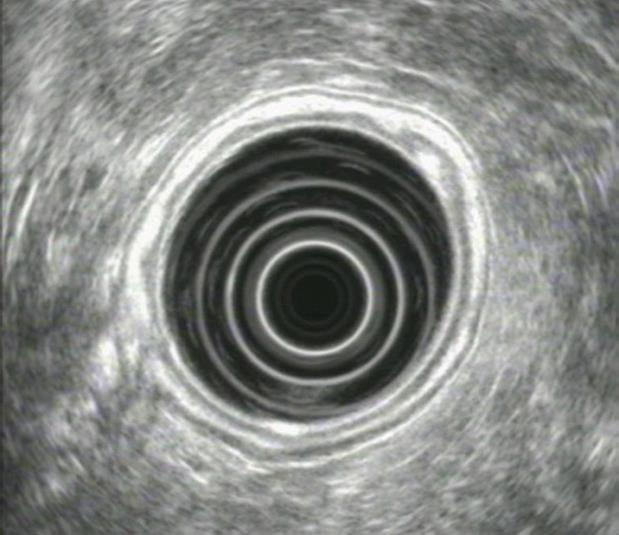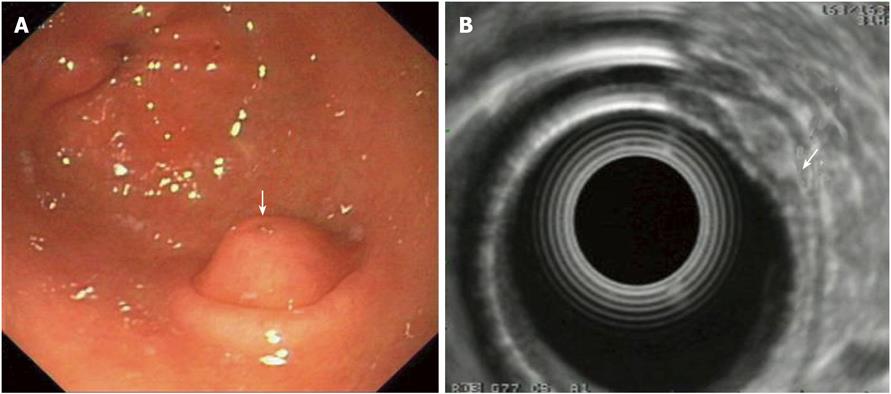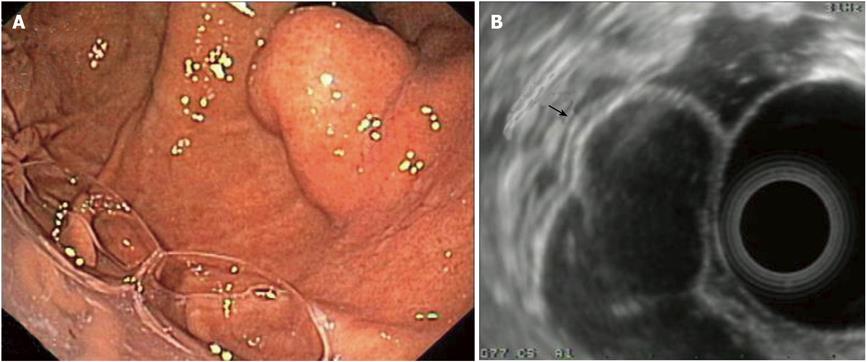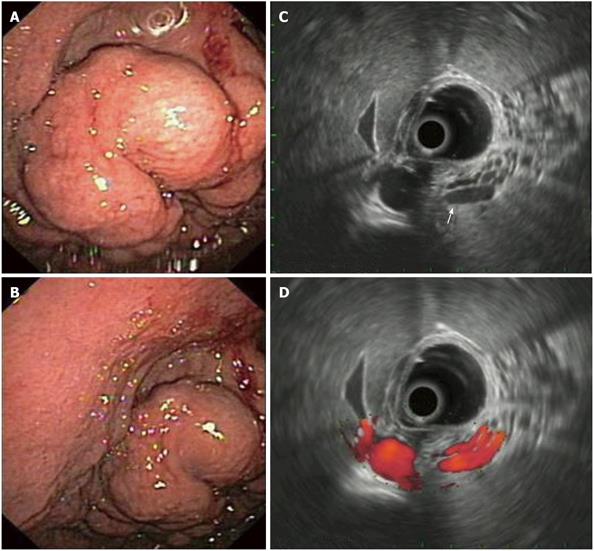Copyright
©2011 Baishideng Publishing Group Co.
World J Gastrointest Endosc. May 16, 2011; 3(5): 86-94
Published online May 16, 2011. doi: 10.4253/wjge.v3.i5.86
Published online May 16, 2011. doi: 10.4253/wjge.v3.i5.86
Figure 1 Gastric endoscopic ultrasonography.
Note the 5 distinct layers that comprise the gastric wall.
Figure 2 Gastric gastrointestinal stromal cell tumors: Endoscopic aspects, endoscopic ultrasonography-imaging and tissue sampling.
A: Endoscopic image of the lesion; note that the lesion is covered by a normal mucosa with a central umbilication (black arrow); B: EUS imaging of the lesion, which is located in the 4th echo-poor layer (muscularis propria); C: EUS-FNA of the lesion; note the presence of the needle (white arrow); D: Histological specimen of the EUS-FNA. EUS:Endoscopic ultrasonography; EUS-FNA: EUS-guided fne needle aspiration.
Figure 3 Pancreatic rest of the stomach: Endoscopic and endoscopic ultrasonography -imaging.
A: Endoscopic image of a pancreatic rest. Note the duct opening on the surface of lesion is covered by a normal mucosa with a central umbilication (arrow); B: EUS imaging of the lesion which originates from the 3rd layer, i.e. the submucosa (arrow); note the lesion’s mixed echogenicity. EUS: Endoscopic ultrasonography.
Figure 4 Duplication cyst of the stomach.
A: Endoscopic image of the lesion (retrograde view); B: EUS imaging of the same lesion; note the lesion’s 3-layer structure which originates from the 3rd layer, i.e. the submucosa (arrow). EUS: Endoscopic ultrasonography.
Figure 5 Gastric varices in endoscopy and endoscopic ultrasonography.
A, B: Endoscopic image of gastric varices presenting as thick serpiginous structures, covered by normal mucosa; C: EUS imaging of the varices; note their tortuous, anechoic structure which originates from the 3rd layer, i.e. the submucosa (arrow); D: EUS Doppler imaging of the same varices; the positive signal denotes their vascular origin. EUS: Endoscopic ultrasonography.
- Citation: Papanikolaou IS, Triantafyllou K, Kourikou A, Rösch T. Endoscopic ultrasonography for gastric submucosal lesions. World J Gastrointest Endosc 2011; 3(5): 86-94
- URL: https://www.wjgnet.com/1948-5190/full/v3/i5/86.htm
- DOI: https://dx.doi.org/10.4253/wjge.v3.i5.86













